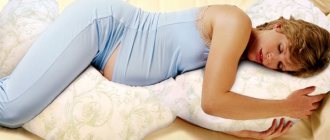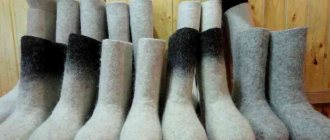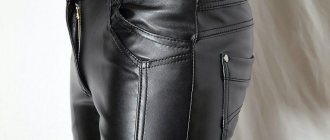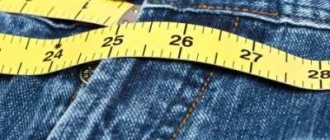A medical bandage is a special device for fixing a certain part of the body after surgery or treatment, as well as during pregnancy and after childbirth. The textile product is made of synthetic fiber, so the bandage can be washed in a machine or by hand. To ensure that the elastic fabric does not lose its shock-absorbing properties during the cleaning process and that the fixing bandage continues to perform its therapeutic and prophylactic functions, you must follow the washing rules recommended by doctors.
How to wash a camel wool belt?
A belt made of 100% camel wool protects and warms the lower back well. Velcro makes it easy to put on and take off the belt and provides free adjustment of the length of the belt. Washing and care instructions: Dry clean or hand wash with warm water and a special mild detergent.
Interesting materials:
Creatine universal how to take? What is defragmentation? How are maternity payments calculated? When are maternity benefits paid? What percentage of children's sick leave is paid? How much can you lose on a buckwheat diet? Dns server is not responding how to fix it? Until what age do they serve in the US Army? What is the retention period before liquidation of the organization? How to calculate the income of an individual entrepreneur?
Why can the bandage be washed?
Translated from French, the word “bandage” means bandage. This special orthopedic product is made of latex material and has various inserts that perform a medical or cosmetic function. There are several varieties of this device, but they all perform one universal function - they fix the damaged part of the body, allowing you to avoid further problems.
- A maternity belt is primarily designed to prevent stretching of the abdominal wall. It reduces the load on a woman’s back and spinal column, relieves muscles, and supports the fetus and abdomen in a certain position.
- Postoperative bandages are used after abdominal surgery.
- Orthopedic bandages are used to fix a damaged ankle, knee or elbow joint.
Over time, compression products become dirty and require cleaning. The postoperative bandage is made of elastic fabric, which is particularly durable and wear-resistant thanks to polyester fiber and polypropylene thread. The maternity belt is made of elastic, breathable fabric, which contains a large percentage of cotton, absorbs moisture well and does not cause allergies. Orthopedic bandages and belts are made of cotton and polyester. These textiles can be washed, and the washing method depends on the composition of the material and the complexity of the design.
Rules for choosing a bandage
In order not to harm your health, you need to take the issue of choosing a bandage seriously.
The attending physician should help the patient with the choice of accessory. Thus, some people may require a universal postoperative bandage or a highly specialized product, which is prescribed to patients after gynecological diseases, kidney diseases, spleen, kidneys and stomach. Our online pharmacy sells bandages at a competitive price.
When selecting a postoperative product, consider the following:
- The size of the bandage should be slightly larger than the size of the postoperative suture, which will prevent chafing and the development of inflammatory processes.
- A product with Velcro rather than fasteners is more convenient to use.
- The bandage is not recommended for use by people with chronic skin diseases, since friction of the fabric of the medical accessory against the skin can create discomfort and pain.
- In addition to natural materials, the product should include elastane, lycra or microfiber. Thanks to these materials, the bandage will allow air to pass through well, allowing the skin to breathe.
Recommendations for detergents:
▪ Focus not on the name of the product, but on its ingredients. Remember that positioning a product as “for children” does not automatically make it safe for use.
▪ Make sure that the composition does not contain optical, chlorine bleaches, or fabric softeners. 3. Avoid powders with high soap content as this will clog the fibers of the wicking layer, making the diaper unusable.
▪ Use one third of the recommended amount of detergent. If diapers are heavily soiled, consider rinsing more thoroughly before washing rather than increasing the dose of detergent.
▪ Do not use essential oils, conditioners or other fabric softeners or fragrances.
▪ To disinfect diapers, it is enough to use the recommended washing and drying mode. Do not add vinegar, chemical antibacterial agents or tablets when washing.
When washing:
Rinse in cold water. Protein stains, if diapers are immediately immersed in hot water, stick to the fabric (brewed), so it will be more difficult to wash them later.
Wash in hot water: add the recommended amount of detergent to the appropriate load size. Rinse in cool water
Dry in the dryer or naturally. Do not dry membrane diapers and PUL covers on hot radiators and heaters, and also avoid exposing them to direct sunlight. Do not use the high temperature setting for drying in dryers.
How to remove stains from a corset
If there are stains on the corset, before soaking and the main wash you need to rub the stains with laundry soap. It will not only clean, but also disinfect the fabric. Instead of laundry soap, you can take special “Antipyatin” soap. This is an inexpensive, accessible and safe product that easily removes various types of contaminants. It does not cause allergies and is safe for children.
Gently rub the soap onto the stain, but do not spread the soap suds. Leave the product like this until it dries completely and then wash it. You can also use folk remedies. Do not use acetone and gasoline, potassium permanganate, ammonia or medical alcohol, glycerin, or chlorine-containing bleaches to remove stains!
Coffee and blood stains, shiny and scorched marks from the iron will be removed by hydrogen peroxide. Soak a cotton pad in the mixture and gently soak the stain, trying not to go beyond the edges so as not to rub the stain even more. We remove tea stains using citric acid dissolved in water in a ratio of 1 to 10.
The selected product needs to be treated only on the stain, without going beyond its boundaries. Otherwise, you will only smear the dirt. Leave the treated item for a few minutes and then wash.
How to wash a bandage by hand?
Medical fixation products are often equipped with Velcro, hooks, fasteners, and stiffeners, so they must be washed very carefully. After all, only proper care guarantees the durability of this complex structure.
- Before washing, clean the surface of the product from dust and adhering dirt using a soft brush. Fasten the Velcro, pull out the stiffeners and laces, if any.
- Fill a basin or bath with warm water (temperature maximum 30°C) and add detergent. Neoprene bands can only be washed with a mild detergent recommended for washing children's clothes. If the product contains wool, you should choose a liquid detergent for wool. It is better to wash cotton with liquid soap.
- The product is soaked in a container with soapy water for 20–30 minutes.
- Wash with a soft brush, being careful not to bend or deform it.
- Rinse several times in cool water and place on a wire rack placed above the bath to drain excess liquid. It is not recommended to twist the product.
We recommend: Is it possible to wash a respirator or does it lose its properties?
Do not use bleaches, stain removers or alkaline soaps to wash compression garments. Only potassium soap and baby laundry detergent are suitable.
It is strictly forbidden to boil the product, dry it in a machine, on a radiator, or steam it with an iron. When exposed to high temperatures, the belt will lose its elasticity and shock-absorbing properties.
After the water has drained, the bandage is laid out on a towel spread on a table in a well-ventilated area and left to dry completely.
Types of bandages for pregnant women
To understand how long you can wear a maternity brace and whether you need to put it on first thing in the morning, you should understand the types of such products. They are:
- In the form of panties . The upper part is complemented by an elastic insert that promotes a comfortable fit on the tummy. These bandages can be worn like regular panties. They are comfortable and pleasant to the body, they are not visible under clothes - this is the main advantage. But there is also a minus: panties need to be washed daily, so their upper part can quickly become unusable. Pills appear on low-quality accessories, and the belt no longer holds the stomach in place. Do not skimp when purchasing such a bandage to wear throughout your entire pregnancy.
- In the form of a belt . Worn over underwear, under the belly. It is fixed with Velcro, which can be adjusted depending on the size of the tummy. It is very important that the bandage has a wide back.
A universal bandage is the best purchase for pregnant women. It can be worn not only during pregnancy, but also after childbirth - to tighten the abdomen. The special belt in this accessory consists of two parts: rigid and elastic. While carrying a baby, the rigid part fixes the back, and after childbirth, the same part fixes the stomach and helps it recover faster to the state it had before pregnancy.
Are Ju-Ju-Be bags and accessories difficult to care for? Not at all. Everything is very simple!
Recommendations owner Zhuzhubi
All of our bags and accessories are hand and machine washable. With proper care, your bag will last you a very long time and will always look like new.
When machine washing, we recommend a delicate cycle in cold water, at 30°C, with a small amount of mild powder or soap.
It is better to place large bags upside down in the washing machine, so the bag fills less with water and does not throw the machine off balance. We recommend using a bag for washing delicate fabrics: this way, the bag will rattle less in the washing machine, is less susceptible to wear and tear, and you can easily find rhinestones if they suddenly fall out.
Please do not wash your bag or accessories right before use, they will take a couple of days to dry on their own.
We strongly recommend drying your bag inside out.
Do not tumble dry. Let's repeat: DO NOT DRY YOUR BAG IN THE WASHING MACHINE!
We also know from one mom that baking soda is very good at removing stains and odors on any clothes if the baby spits up after eating. Simply take a toothbrush and mix baking soda with a little water, then apply to the stain and wipe with a damp cloth.
LOC from Amway can handle light stains - this is not an advertisement, it really works! LOC cleansing wipes perfectly remove small stains (they are especially convenient for a changing mat) and are safe for the baby.
For greasy stains, we recommend pre-treating the stain with a small amount of diluted dishwashing detergent.
You can wash the changing mat and organizers in the washing machine, as well as the Paci-Pod pacifier case, thermal bags, Bottle Rocket thermal cases, Mess Shuttle wet bags and more (Mess Shuttle and Bottle Rocket can even be washed in the dishwasher!!! ). It is better to wash Be Mine and other organizers and accessories in a bag for delicate fabrics so that they do not make too much noise :)
Sometimes after washing, air accumulates in the changing mat, just fold it and press it - and its shape will be restored. The mattress filler, which provides softness, comfort and shape retention, absorbs water very well, so it takes quite a long time for the mattress to dry on its own. If possible, wring it out as much as possible and lay it out to dry.
Content:
- How to wear, when and how long to wear a bandage for a pregnant woman?
- Is the bandage worn correctly?
- 3 tips for wearing a brace
A prenatal bandage, or a bandage for pregnant women, is an orthopedic device, the purpose of wearing which is aimed at improving the woman’s well-being and ensuring maximum comfort. Why wear a bandage during pregnancy? This belt, made using a special pattern and from a special elastic material, is able to relieve stress from the spinal column and prevent pain in the back or lower back.
From what week of pregnancy should I wear a bandage? How long should pregnant women wear a bandage? How to put on and wear a maternity bandage? You will get answers to these questions in this publication.
In the typewriter
Before washing, read the manufacturer's care recommendations. The information must be on a label on the inside of the product or on the packaging.
Washing postoperative bandage in a machine is possible if:
- water temperature no higher than 30 degrees;
- delicate mode is set;
- the number of revolutions during spinning is minimal;
- The extra rinse function is not used.
The orthopedic washed unless otherwise specified by the manufacturer. The parameters are:
- delicate or hand wash;
- temperature not higher than 40 degrees;
- Spin is disabled.
maternity can be washed in a washing machine
- Set to delicate mode.
- Set the temperature to 30 degrees.
- Do not turn on the additional rinse mode.
- Set the spin to minimum speed or turn it off.
What to do with feces?
Feces during breastfeeding:
You don't need to do anything. Breastfeeding feces are 100% organic and will be removed during the initial rinse. If there is a lot of feces, it would be wiser to flush the contents down the toilet or sink first.
Formula-fed feces and solid feces: As with all diapers, when changing a reusable diaper, remove as much solid material as possible (throw into the toilet or trash can).
*Did you know that even disposable diaper manufacturers remind you on the packaging that all solids must be disposed of in the toilet before disposing of the diaper? Our landfills are NOT designed to handle human feces. Dispose of feces in the sewer (through the toilet)!
How to put on and tighten a corset correctly
- Thread the ribbon through the top two holes. The ends of the lacing should be located at the same distance;
- Take the lacing from the right side and thread it from above into the next free hole on the left side of the product;
- Do the same with the left ribbon, threading it through the right side. Lacing is formed crosswise, and the ribbons are inside;
- Pass the right braid through the hole again from the left side from the bottom up, from the inside to the front. Do the same with the left lace. It turns out there are already two X's, one inside and the other outside;
- Repeat steps 2-4 until the ribbons reach waist level, where you need to make loops that tighten the corset;
- We place the right cord in the hole located below on the same right side. We thread the braid from top to bottom, from the outside to the inside;
- Do the same with the left ribbon. Loops are formed to tighten the bodice;
- After the loops, repeat steps 2-4 until you reach the bottom level. Distribute the tape evenly so that there is a gap of about ten centimeters between the right and left parts of the product. Then we tighten the corset.
Is the bandage worn correctly?
You can determine whether the bandage belt is worn correctly by the following signs:
- it passes under the abdomen and below the buttocks;
- rests on the hips;
- covers the pubic bone.
It should be remembered
that the bandage should slightly compress the abdomen, but in no case put pressure on it or other soft tissues. You should also not loosen the belt too much, as it will not have the necessary effect and may rub the skin.
Usually in the box with the purchased prenatal bandage you can find instructions that describe in detail how to put on the bandage for pregnant women. The instructions also contain recommendations on proper care of the product.
To make sure that you have learned how to put on a prenatal bandage correctly, you can take it with you to a consultation and, together with your doctor, determine whether you are making mistakes when putting it on or if you are doing everything correctly. The doctor will definitely explain everything to you in detail and clearly show you how to put on the belt and not harm yourself and your unborn child.
A maternity bandage is a convenient orthopedic device that will make the life of the expectant mother more comfortable and active. With the right choice, a woman will get rid of unpleasant sensations in the back, hips and abdomen. It is necessary to wear and choose a prenatal bandage following all the recommendations of a doctor or an experienced consultant, since the wrong choice will affect not only the family budget, but can also lead to undesirable consequences for the health of the woman and her unborn baby.
Bandage during pregnancy and after, how to wear, indications, application
Section: About health products
Tags: new products
What is the purpose of a maternity bandage?
First of all, with its help, you can relieve the expectant mother of back pain (in the area of the lumbosacral spine) and avoid overstretching the tissues of the anterior abdominal wall. How to choose the right bandage during pregnancy and what contraindications to wearing a bandage exist.
Who needs to wear a bandage
In the modern world, pregnancy is not an obstacle for the expectant mother to continue to lead an active lifestyle. But any movement already at 20-30 weeks becomes much more difficult, because the expectant mother begins to gain weight, the center of gravity shifts, and from now on long walks can bring more disappointment than joy. Therefore, if the expectant mother is on her feet for 3 hours a day or more, then the bandage is simply necessary to perform its main function - supporting the abdomen.
Doctors usually prescribe expectant mothers to wear a bandage if they have varicose veins or simply experience pain in the legs and back, a caesarean section during a previous birth, an enlarged uterus or the threat of fetal loss.
Mandatory indications for wearing a bandage in case of obstetric pathology: uterine scar, threat of miscarriage, polyhydramnios, multiple pregnancy, excessive increase in the size of the uterus, large size of the fetus, malpresentation of the fetus, low location of the placenta.
After childbirth, including cesarean section, the bandage serves to tighten and fix the abdomen.
It is worth noting that the bandage is especially necessary for working pregnant women.
What types of bandages are there?
How to choose and buy a bandage?
There are various modifications of the bandage for pregnant women, bandage-panties, belt, corset and a combined version. Of all the types, the bandage-belt is the most practical and convenient; for example, the bandage-panties need to be washed often, and the corset requires long-term donning.
Universal bandage IDEAL
Taking into account all the structural features of the female body during pregnancy and the difficulties that the expectant mother faces, I have developed the most comfortable and versatile bandage - IDEAL. The IDEAL bandage will support the organs and tissues of the abdominal cavity in a state of rest during pregnancy, will help the baby take the correct position, and, thanks to its versatility, will accelerate the process of restoring muscle tone after childbirth. Using a special fastener, you can independently adjust the degree of support and tightening. The IDEAL bandage is made of high-quality, bleached, knitted elastic fabric: does not cause allergic reactions, does not deform, and dries quickly.
During pregnancy, the wide part of the belt is put on backwards for maximum support and relief of the back, and the narrow part is fastened under the stomach, providing reliable support for it. After childbirth (including caesarean section), the belt is turned “back to front” - and now its wide part serves to tighten and fix the abdomen, and the narrow part is fastened at the back.
When to start wearing a brace
It is recommended to wear a bandage for pregnant women no earlier than the 20th week. If you have multiple pregnancies, or you have a large fetus, or have pathologies such as polyhydramnios or a uterine scar, then you should wear a bandage from the 16th week of pregnancy.
How to wear a bandage correctly
It is advisable to wear the IDEAL bandage in a supine position; it is in the “lying” position that the weight is distributed throughout the body and makes it possible to fix the uterus without putting pressure on it from above.
If you put on the IDEAL bandage correctly, then after some time you will no longer feel it on you. Every 3-4 hours, if possible, take a break of 30-40 minutes and remove the bandage to rest. The bandage must be removed at night and during daytime rest.
There are contraindications for wearing a bandage - the fetus is positioned in the uterine cavity in the wrong position (in a transverse position or head down).
Therefore, before buying a bandage, be sure to consult your doctor!
The IDEAL bandage allows expectant mothers to maintain correct posture, relieves back muscles, reduces back pain, provides lumbar comfort under heavy loads due to the high special backrest, fits comfortably and does not irritate the skin. Evaluate its quality and availability and you will not be disappointed, and your tummy will be reliably protected!
THERE ARE CONTRAINDICATIONS.
BEFORE USE, CONSULT A PROFESSIONAL.
Product by topic:[product](Bandage Our Mom)
As an advertisement.
Section: About health products
Tags: new products











